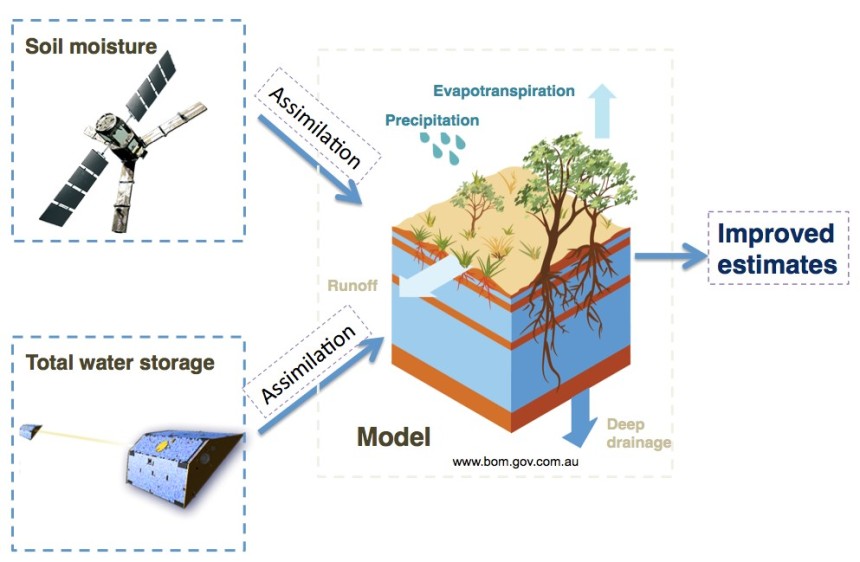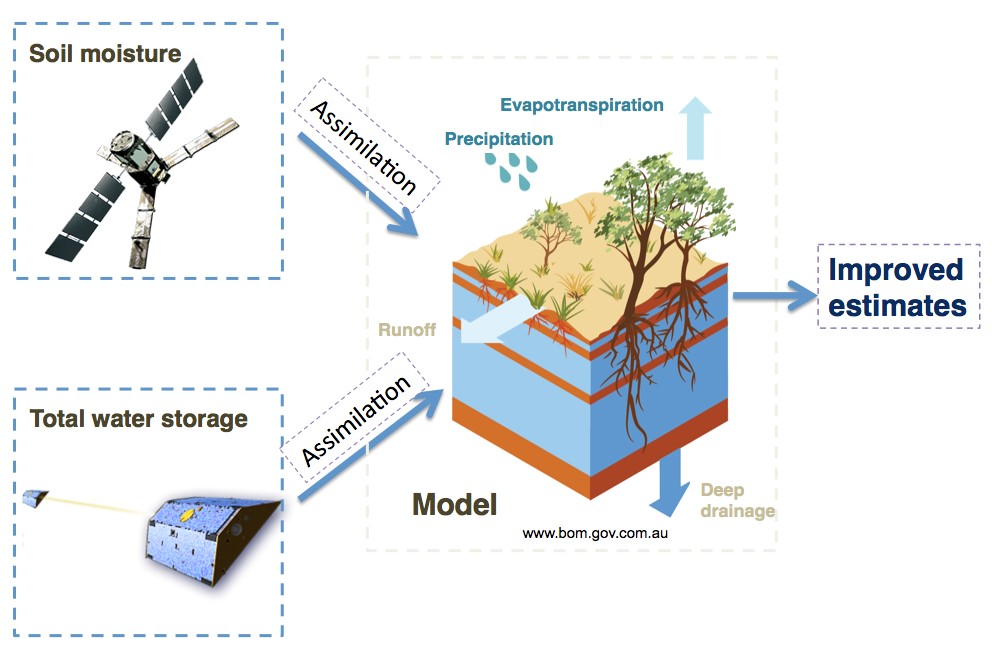The gravity of water: combining mass and soil moisture remote sensing to improve water forecasts

New research has assimilated both near-surface soil moisture (SM) observations and total water storage (TWS) observations into a water balance model and shown that using both permits for more accurate water storage estimates.
This is the first time both TWS from the Gravity Recovery and Climate Experiment (GRACE), and SM from the Soil Moisture and Ocean Salinity (SMOS) mission have been used together for this purpose.
Accurate estimates of terrestrial water storage and its compartments (e.g., soil moisture, groundwater, surface water, snow, and ice) are critical for water resource assessment and management. Particularly, root-zone soil water and groundwater storages are always poorly known due to the lack of observation at large scale and the uncertainties of model simulations. Data assimilation can be used to optimally combine information from both model predictions and observations.
Changes in water storage induce regional mass redistribution and, therefore, can be observed by the GRACE satellite. GRACE-derived TWS is an integrated monthly averaged water storage change at coarse scale. SMOS measures surface soil moisture at about top 5 cm with a 3-day revisit and finer resolution about 25km.
The assimilation of only one data set can place undue adjustments on other state variables. By using both, subsurface water storage can be better disaggregated from the TWS, owing to the constraints from both TWS and surface SM.
Our research, published in the journal of Water Resource Research, employs an effective data assimilation framework based on ensemble Kalman smoother. The framework integrates monthly water storage and soil moisture retrievals into a daily global water balance model (adopted from the Australian Water Resource Assessment model, AWRA-L). In-situ measurements of surface and root-zone soil moisture, groundwater, streamflow, and evapotranspiration were used to evaluate the reanalysis results.
The joint assimilation framework was found capable of producing more accurate estimates of individual water storage compartments, particularly root-zone soil water and groundwater storage estimates. SMOS can provide temporally and spatially varying constraints on near-surface soil moisture and shallow-layer soil moisture estimates from the model. GRACE mostly contributed to correcting model simulated deep-layer soil moisture and groundwater storage values in the assimilation, also imparting overall constraints on monthly total water storage estimates.
The improved model estimates offer great potential for drought and groundwater monitoring as well as water cycle component reanalysis.
Article: ‘Improved water balance component estimates through joint assimilation of GRACE water storage and SMOS soil moisture retrievals, Tian, S., Tregoning, P., Renzullo, L., van Dijk, A., Walker, J., Pauwels, V. and Allgeye, S., Water Resources Research, doi: 10.1002/2016WR019641

